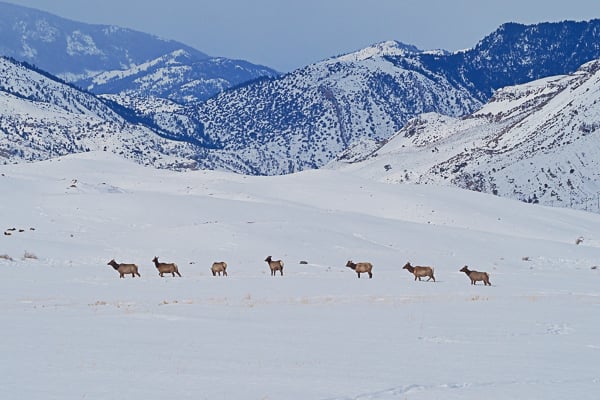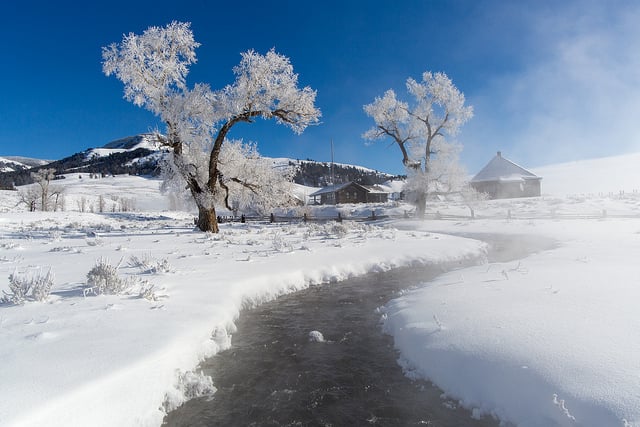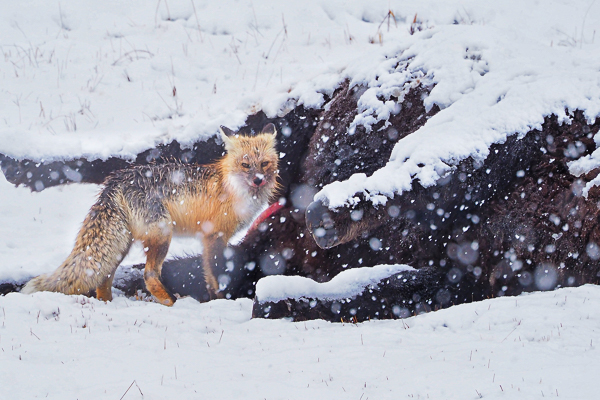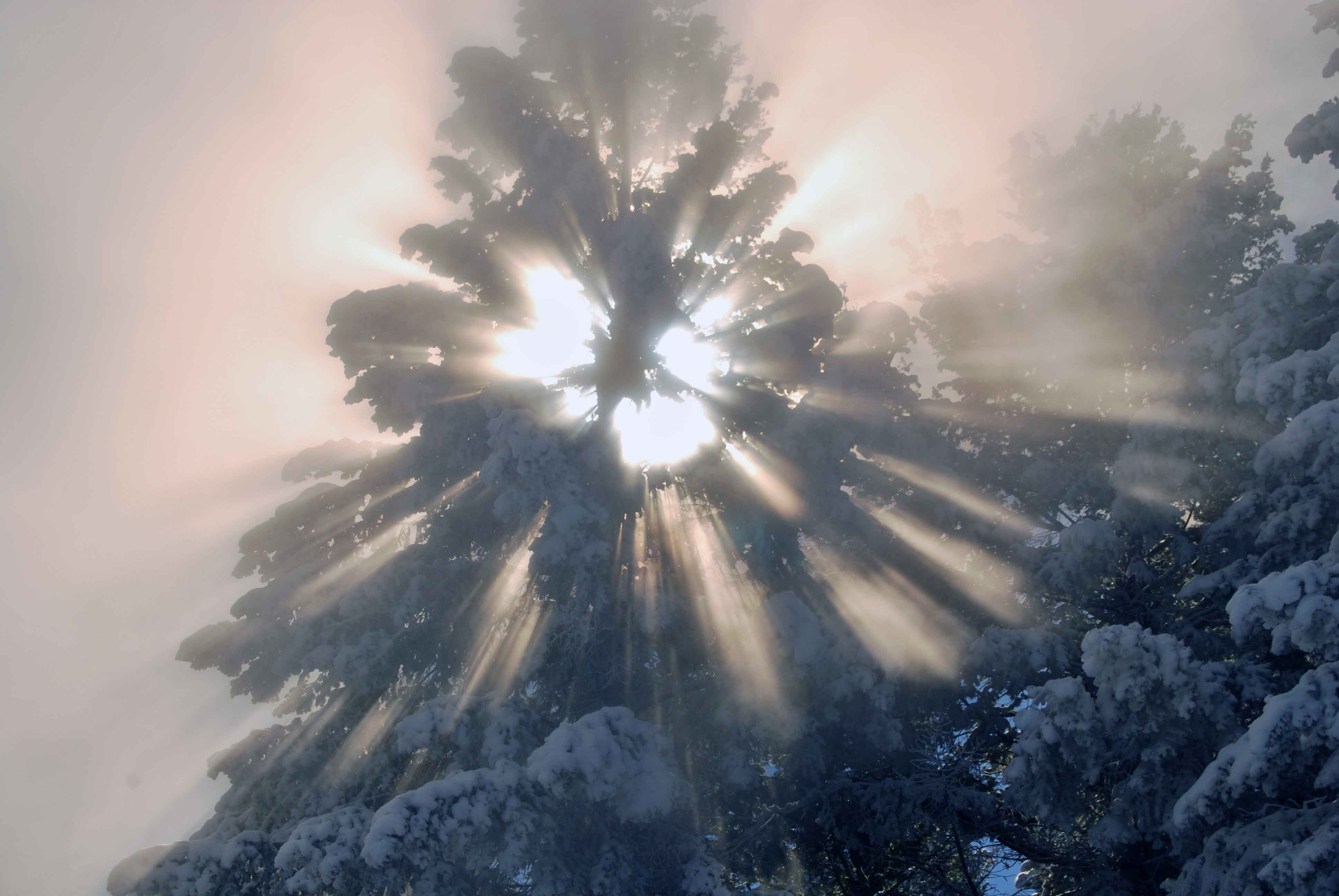11 Ways To Get Amazing Winter Photos
Creatively Capture Your Winter Experience
Peaceful snowy landscapes, billowing steam, frost-covered bison: how do you capture the essence of winter in Yellowstone? Whether you are toting a fully manual DSLR camera, or simply your cellphone, taking great pictures is easier than you think. These tips will help you creatively capture your winter experiences.
1. Play with light
Looking for ways the sunlight illuminates features on the landscape can reveal some dramatic images. If you can catch the sun shining through billowing steam, or through the branches of a lodgepole pine tree, you’ll capture an ethereal moment.
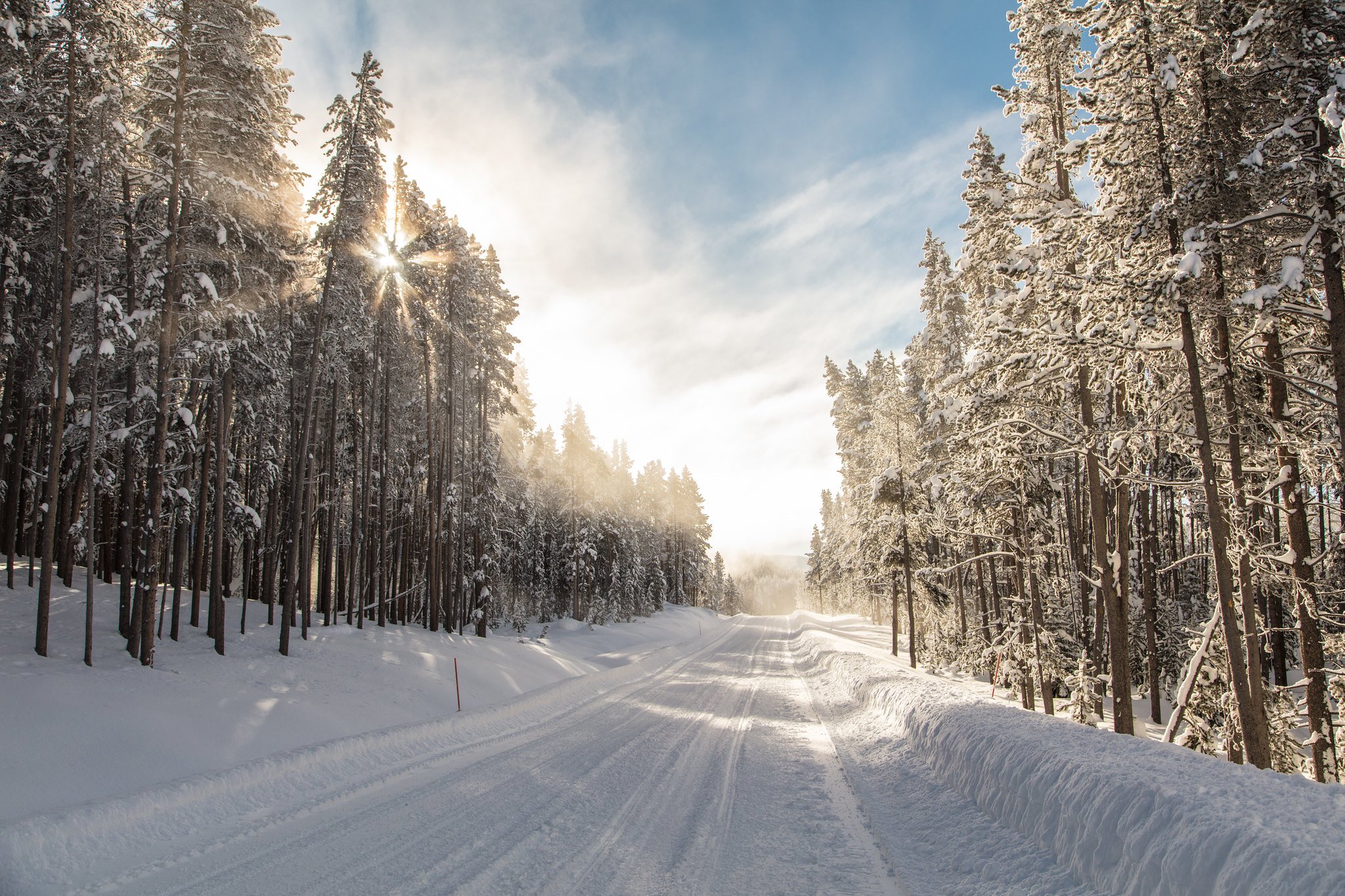
2. Put something in the foreground
Yellowstone’s vast, open landscapes can be difficult to capture in a photograph. Composing your photograph with a person, animal, or natural feature in the frame will give your image a nice sense of scale.
3. Seek out color
While some winter days can be bright and sunny, it’s just as often that the light is dull and flat. Don’t let grey skies deter you! Look for color in the grasses and willows of the northern range, or in the deep hues of thermal features to brighten up your composition.
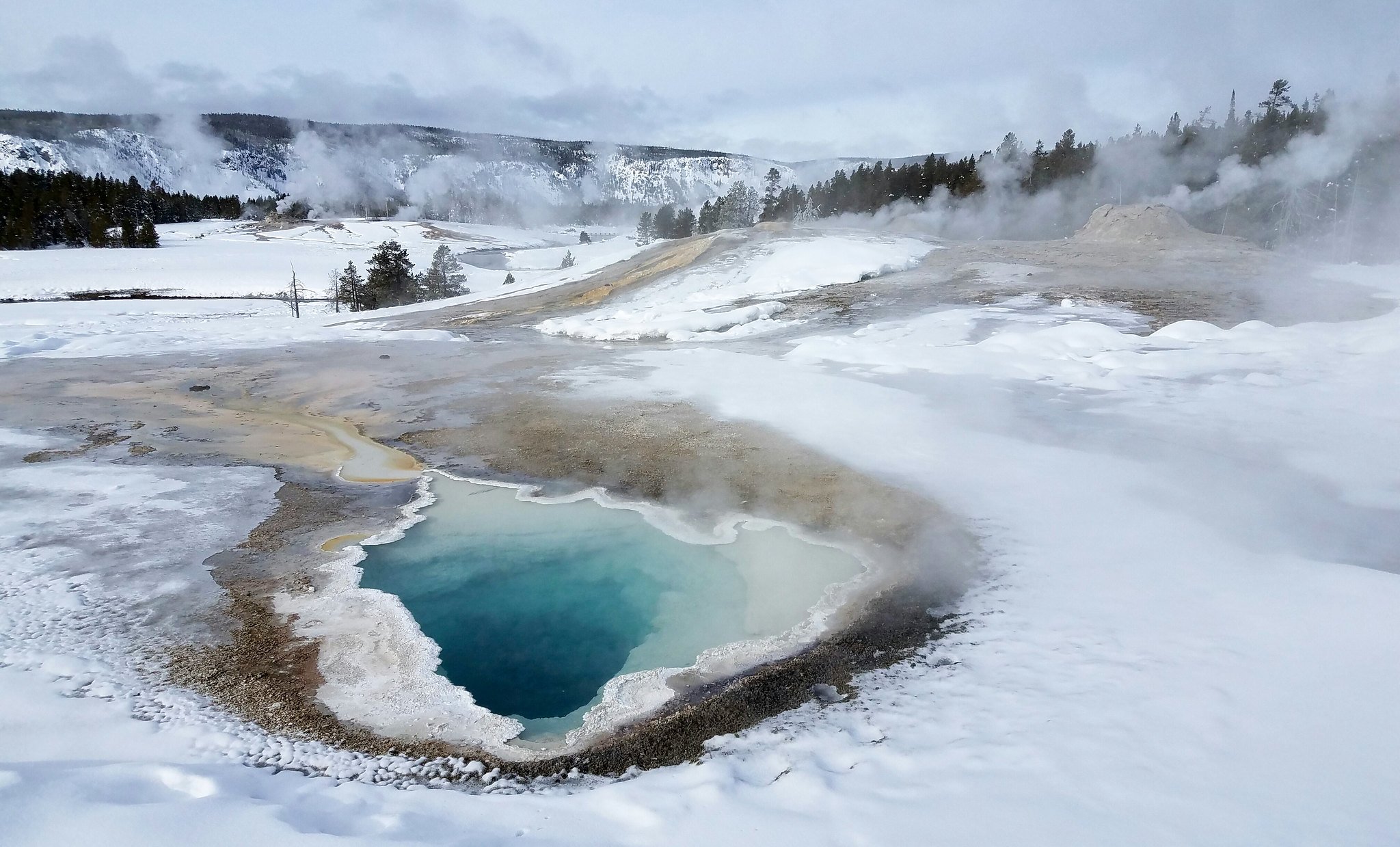
4. Try black and white
Winter pictures can often look the same – white landscape, green trees, grey sky. Mix it up by looking for contrast between light and dark. Most modern cameras—including your cellphone—have a black and white setting. If not, you can change it to black and white with a little post editing in your phone’s image editor or a program like Lightroom or Photoshop.
5. Use a different perspective
Most casual photographers make the mistake of taking pictures from standing height. If you change the position of the camera, you’ll create a unique—and likely more moving—image. Try shooting straight up at snow-covered fir trees against a deep blue sky, bending down to be at eye level with your subject, or shooting from the boardwalk directly over a thermal feature below.
6. Tell a story
While it’s exciting to zoom in on the face of a bison or fox (with a telephoto lens, of course), the photograph could have been taken (almost) anywhere. What was the animal doing? If you provide some context around the image, you’ll reveal more of the essence of Yellowstone.
7. Embrace the cold
While it may be tempting to curl up by the fire in the Old Faithful Snow Lodge when the thermometer dips (well) below zero, you’ll miss some great photo opportunities. Natural phenomena like diamond dust—tiny ice crystals that form in the air at very cold temperatures—sparkle like gems in the morning sunlight. Hoar frost and rime ice—formed when moisture in the air crystalizes on trees and boardwalk railings—are other features of clear, cold mornings.
8. Get close
Taking close up photographs of frost, ice, fresh snow clinging to lodgepole pine trees, or simply a detail of a thermal feature can be a stunning way to portray the feeling of being in Yellowstone.
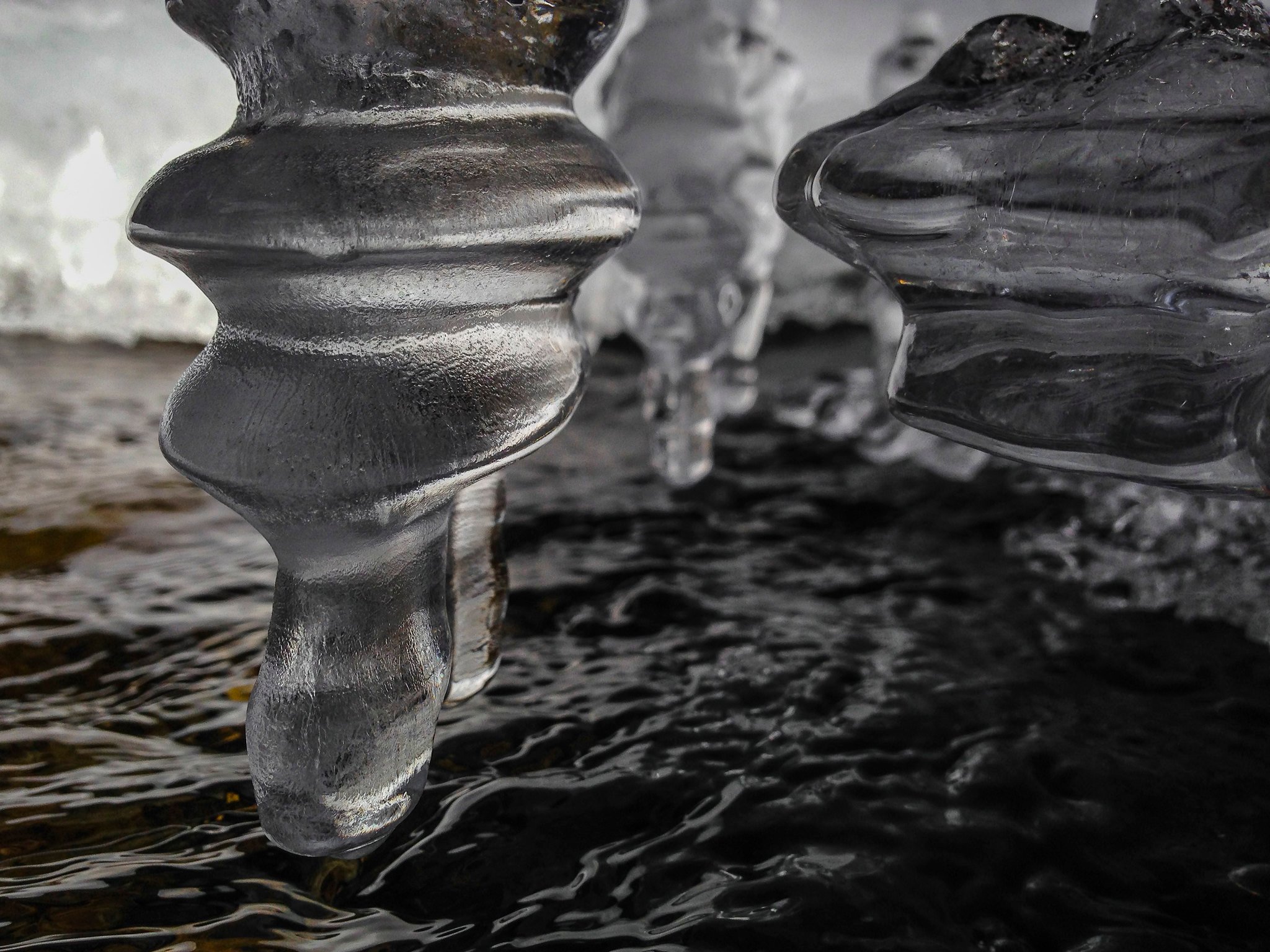
9. Become a night owl
The image of a warm and cozy lodge from outside at night evokes an inviting feeling. While night exposures can be tricky, some of the newest phones have a night photography mode that is pretty powerful. If you are more adventurous, explore the world of night photography by using a long exposure and a tripod to document some of the billions of stars visible on a clear night in Yellowstone.
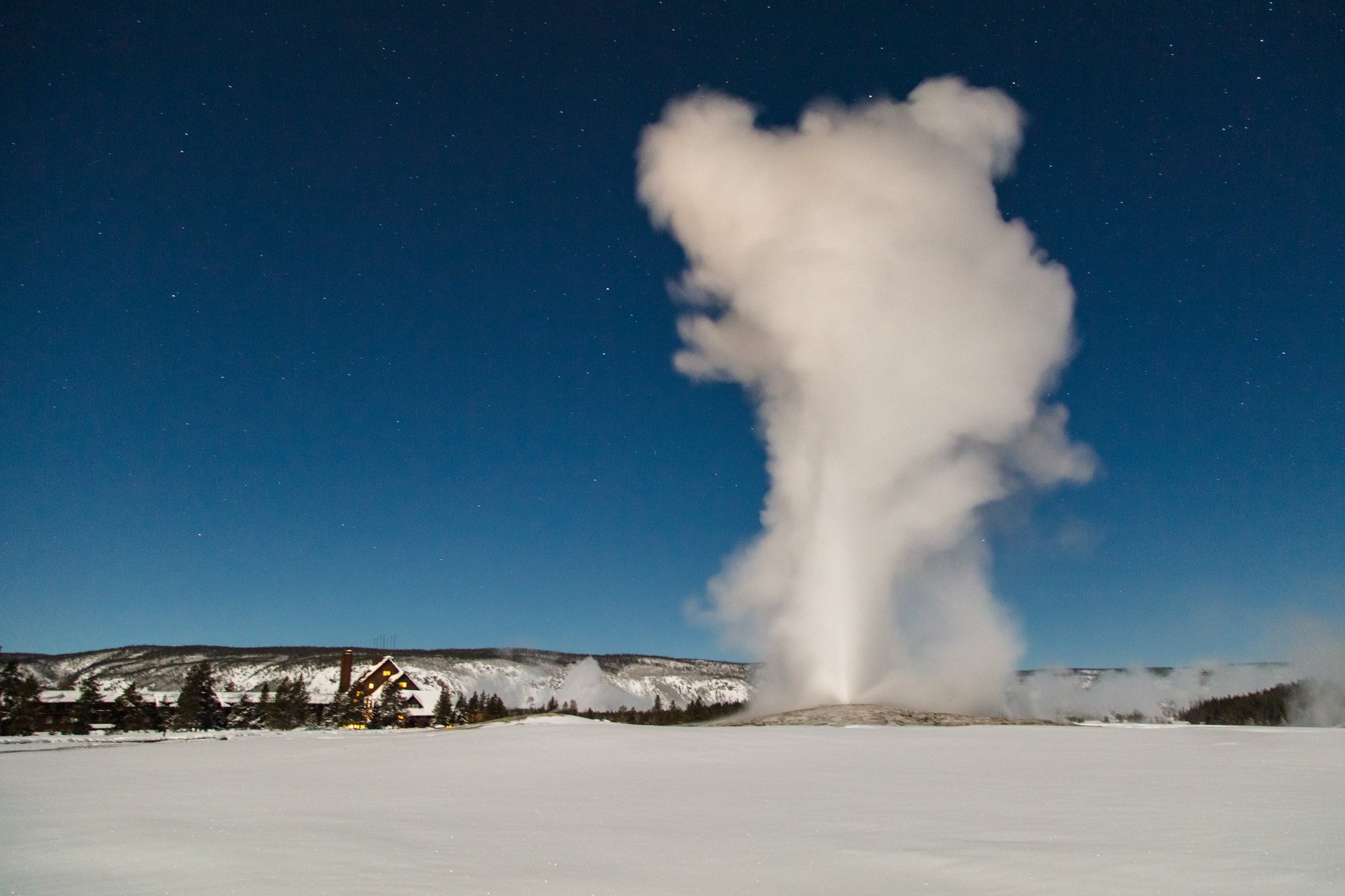
10. Get up early
One of the most beautiful scenes in winter is alpenglow; the blush of deep pink on white, snowy, mountains. Rising early just before sunrise gives you the chance to capture the “golden hour,” when light is gentle and often full of color.
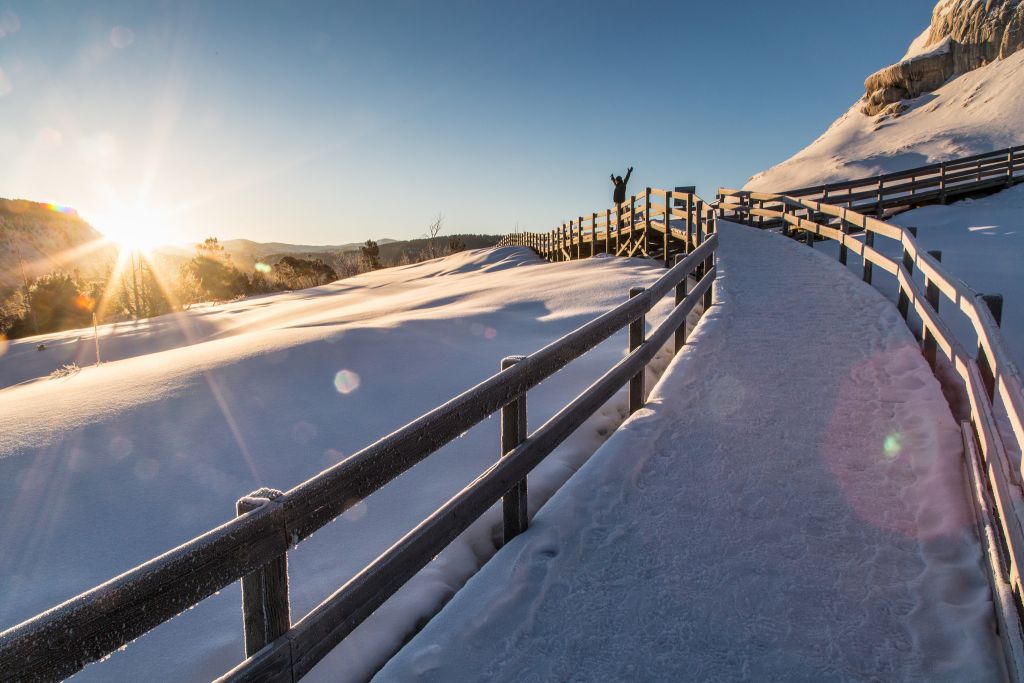
11. Capture the action
How many photos of the back of someone’s head do you remember? Exactly. When adventuring in the park, get ahead of your group and take a photo of them coming towards you. You’ll not only capture their happy faces as they explore the park, but also a truer moment.
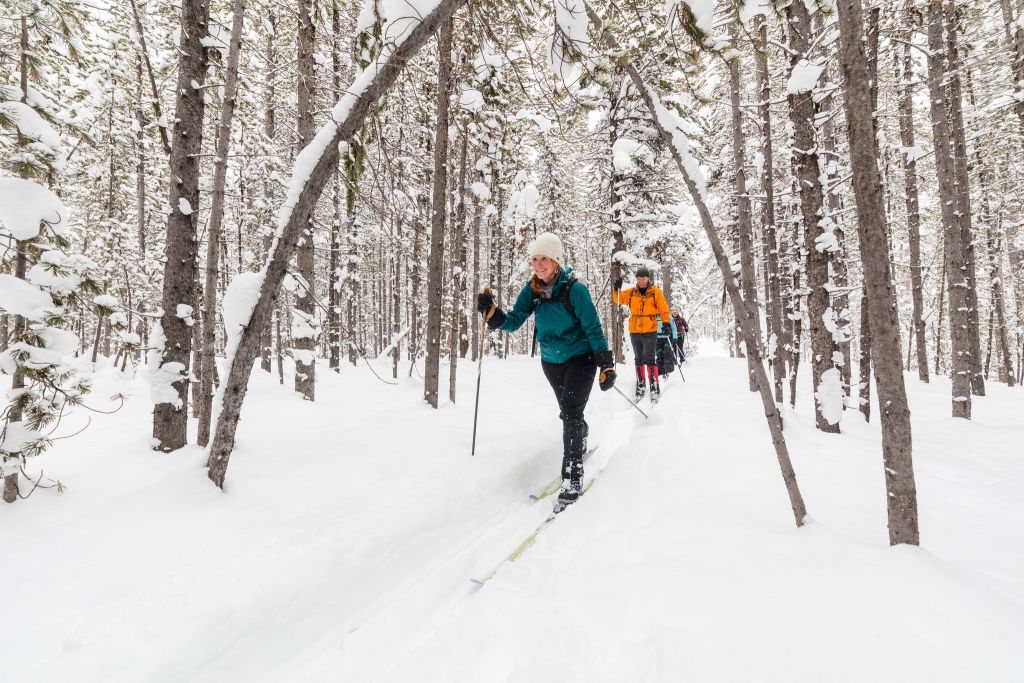
Taking pictures comes with an ethical responsibility. The park requires a minimum distance of 25 yards from most wildlife, and 100 yards from wolves and bears. Yellowstone’s wildlife are under extreme stress in winter, even if they seem calm and peaceful. If you change their behavior – you’re too close! Give them every chance at survival by keeping your distance and using a telephoto lens. As always, thermal features are fragile and dangerous. Stay on boardwalks and marked trails; no photograph is worth jeopardizing your safety or these national treasures.
Jenny Golding is the founding editor of A Yellowstone Life and writes from her home at the north entrance to Yellowstone in Gardiner, Montana.
20191211
For A World of Unforgettable Experiences® available from Xanterra Travel Collection® and our sister companies, visit xanterra.com.
Want to experience Yellowstone in-depth? See what makes Yellowstone National Park a great place to work for a season or longer!
